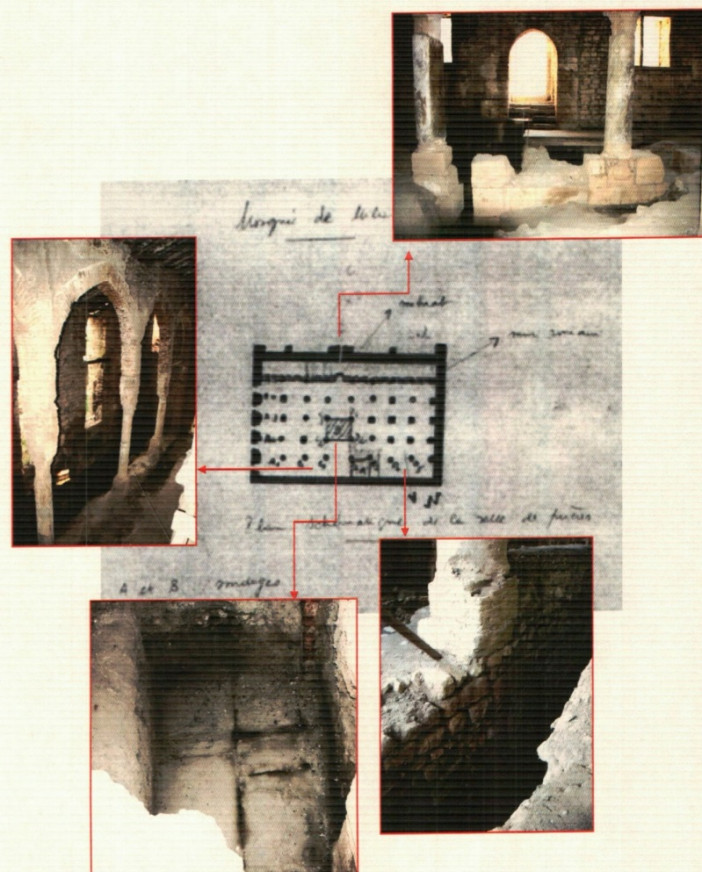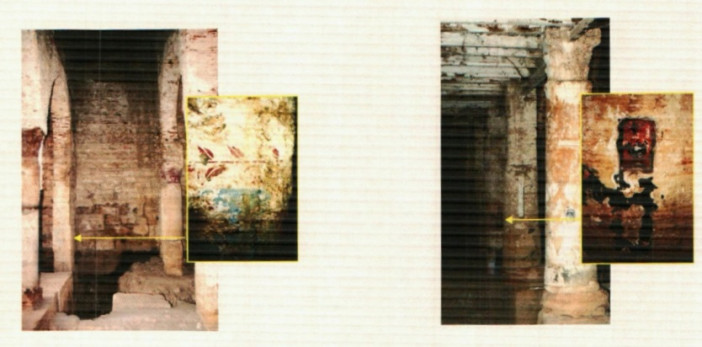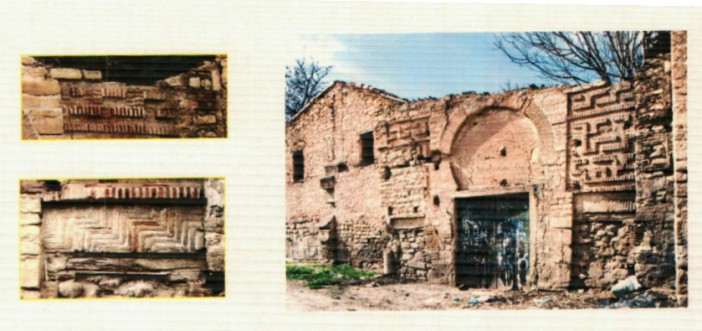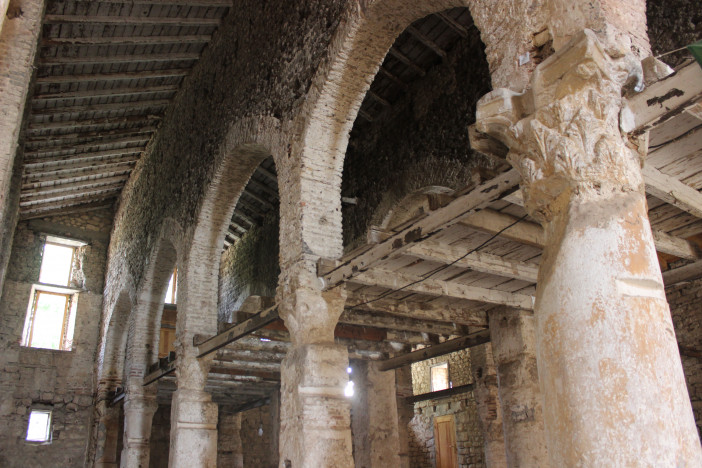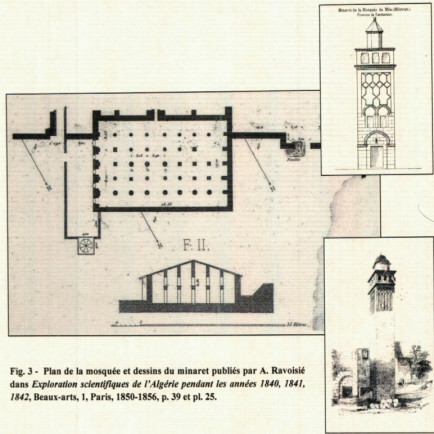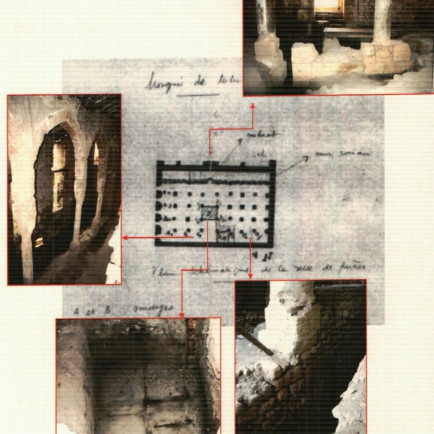The mosque of old Mila
History
The mosque of the old Mila is considered to be the oldest mosque in Algeria, as it is believed to have been built by Abu al-Muhadjir Dinar during his stay in Mila between (678-670 AD).
When we go through the history of Mila, about which we have little information, we find that in the ninth century the city possessed according to Al-Yakūbī "two citadels, one above the other". These two citadels refer to the Byzantine stronghold and the governor's residence, called the "kasbah," which always served as a garrison for the armies of the occupiers. The mosque is built in the latter.
As was the tradition in the Middle Ages and in the Ottoman period, mosques generally bear the name of their founders and serve as their mausoleum. This ancestral tradition leads us to wonder whether the two tombs discovered in the prayer room and the inscription bearing the name of Sidi Ghanem of Tunisia, have a relationship with the known names of our mosque.
Urban and Architectural
The history of this mosque is better defined in its architecture, the technique of its construction and the ornamentation of its walls which bear the imprint of several periods. First of all, the pre-colonial period to which we attribute the walls in opus mixtum alternating a layer of rubble and two layers of bricks, the walls in raw earth brick used to raise the level of the roof, the chaining in logs, the mortar of earth stabilized with lime and sand, the nature of the repairs of the walls of the facades, and the masonry of the extrados of the arches.
The pre-Ottoman period seems to be marked by the opus of the walls, which apparently have not undergone many changes, such as the wall of the courtyard (without the buttresses) and the western wall of the prayer hall, which is identical: it is a mixed opus consisting of opus incertum with brick bases. However, this wall construction technique is very old and has been perpetuated through the ages. The Roman builders practiced it from the first century and it is widely spread in the Mediterranean Muslim world during most of the Middle Ages.
The plan of the mosque is rectangular, with arched galleries.
Description
The shape of the arches, the columns that have no base, the capitals replaced by column bases or pillettes, the south and southwest orientation of the mihrab, are all elements that characterize the mosques of the High Middle Ages, especially those built around this same period of the ninth century.
The minaret, as it appears on the drawings of the nineteenth century, without the lantern and the arches of the upper level, recalls that of the first Zayyanid mosques of Agadir and Tlemcen, which date back to the time of Yaghmurâsan, founder of the dynasty (1235-1283), even if some of these drawings are considered inaccurate by St. Gsell. The hexagonal shape of the lantern, with its conical dome, and the type of horseshoe arch of the second floor are a mark of Ottoman architecture.
As for the ornamentation of the walls of the prayer hall, the floral decoration made on plaster, fragments of which were discovered next to the mihrab and near the wall of the eastern façade, is compared by R.Doukali, the author of the discovery, to those of the Qal'a of the Banū Hammad.
References
https://www.asjp.cerist.dz/en/downArticle/90/23/2/82508
https://fr.wikipedia.org/wiki/Mosqu%C3%A9e_Sidi_Ghanem_de_Mila
https://earth.google.com/web/search/mosqu%c3%a9e+sidi+ghanem,+Mila,+Algeria/@36.45034612,6.27175272,461.90399543a,163.08899247d,35y,3.70828104h,0t,0r/data=CigiJgokCUy6SfClOUJAEQRWYp1MN0JAGZOZlmuPNxlAITjLICrcABlA
Details
Location
Mila, Algeria
Worshippers
375
Owners
Abu al-Mouhadjir Dinar
Year of Build
678-670
Area
750
Drawings
Map
History
The mosque of the old Mila is considered to be the oldest mosque in Algeria, as it is believed to have been built by Abu al-Muhadjir Dinar during his stay in Mila between (678-670 AD).
When we go through the history of Mila, about which we have little information, we find that in the ninth century the city possessed according to Al-Yakūbī "two citadels, one above the other". These two citadels refer to the Byzantine stronghold and the governor's residence, called the "kasbah," which always served as a garrison for the armies of the occupiers. The mosque is built in the latter.
As was the tradition in the Middle Ages and in the Ottoman period, mosques generally bear the name of their founders and serve as their mausoleum. This ancestral tradition leads us to wonder whether the two tombs discovered in the prayer room and the inscription bearing the name of Sidi Ghanem of Tunisia, have a relationship with the known names of our mosque.
Urban and Architectural
The history of this mosque is better defined in its architecture, the technique of its construction and the ornamentation of its walls which bear the imprint of several periods. First of all, the pre-colonial period to which we attribute the walls in opus mixtum alternating a layer of rubble and two layers of bricks, the walls in raw earth brick used to raise the level of the roof, the chaining in logs, the mortar of earth stabilized with lime and sand, the nature of the repairs of the walls of the facades, and the masonry of the extrados of the arches.
The pre-Ottoman period seems to be marked by the opus of the walls, which apparently have not undergone many changes, such as the wall of the courtyard (without the buttresses) and the western wall of the prayer hall, which is identical: it is a mixed opus consisting of opus incertum with brick bases. However, this wall construction technique is very old and has been perpetuated through the ages. The Roman builders practiced it from the first century and it is widely spread in the Mediterranean Muslim world during most of the Middle Ages.
The plan of the mosque is rectangular, with arched galleries.
Description
The shape of the arches, the columns that have no base, the capitals replaced by column bases or pillettes, the south and southwest orientation of the mihrab, are all elements that characterize the mosques of the High Middle Ages, especially those built around this same period of the ninth century.
The minaret, as it appears on the drawings of the nineteenth century, without the lantern and the arches of the upper level, recalls that of the first Zayyanid mosques of Agadir and Tlemcen, which date back to the time of Yaghmurâsan, founder of the dynasty (1235-1283), even if some of these drawings are considered inaccurate by St. Gsell. The hexagonal shape of the lantern, with its conical dome, and the type of horseshoe arch of the second floor are a mark of Ottoman architecture.
As for the ornamentation of the walls of the prayer hall, the floral decoration made on plaster, fragments of which were discovered next to the mihrab and near the wall of the eastern façade, is compared by R.Doukali, the author of the discovery, to those of the Qal'a of the Banū Hammad.


